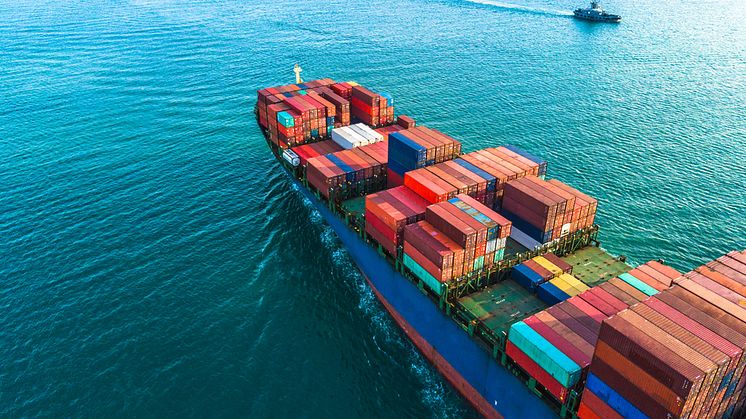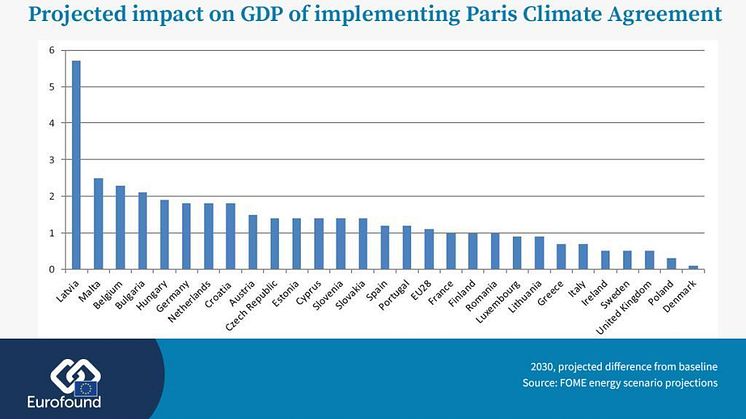
Press release -
EU, China, US will suffer economically from the re-emergence of protectionism
The world’s largest economies, particularly the EU, China, the US, Mexico and Canada, are projected to suffer economically from the re-emergence of economic protectionism, and a significant increase in trade tariffs. In the case of the EU, the bloc would experience a 1% contraction in GDP, a 0.3% lower rate of employment, and a 1.1% decrease in imports by 2030, compared to a ‘no new tariffs’ baseline scenario.
This analysis is based on a global macro-economic model run by Cambridge Econometrics and Eurofound’s European Jobs Monitor. It is detailed in the Trade scenario: Employment implications in Europe of a large increase in global tariffs report from the Future of Manufacturing in Europe (FOME) project. FOME is an EU project proposed by the European Parliament and delegated to Eurofound by the European Commission.
The projections detailed in the report are modelled on a basis that there would be significant tariff hikes between NAFTA countries; that there would be a 25 percentage-point increase in US tariffs on imports from China across all manufactured and agricultural goods; that there would be reciprocal tariffs implemented by China, and that a similar tariffs regime comes into effect between the US and the EU.
There has been an increase in economic protectionism since 2008, but this has significantly gained pace under the current US administration which has overseen a substantial increase in tariffs with both China and the EU. The report shows that all three global actors will lose out in the scenario, with the US experiencing a 0.3% decline in GDP by 2030, China a 0.8% decline, and the EU a 1% decline.
Looking at the EU in more detail, nearly all EU Member States will experience a decline in GDP. In the case of the Netherlands, Hungary and Germany, this would be close to, or in excess of, 2%. Germany, Europe’s largest exporter to the US, is particularly vulnerable to higher US import tariffs. However, it is the Netherlands that stands to be the most affected from the direct impact of lower trade volumes to the US, and also more generally from weaker economic activity in the EU, as the Netherlands acts as one of the main ports for EU trade with destinations outside the bloc.
The implications for employment are similarly negative in almost every country in the EU, albeit on a smaller scale to GDP. Generally, the impact on employment is roughly half that of the impact on GDP, but there are exceptions, notably in the Netherlands where the sectors most affected by trade are not the most labour intensive in the economy. Partly for this reason, it is Germany that would be most negatively impacted in terms of employment. Spain is another major European economy that would suffer a disproportionately negative impact on employment, reflecting a sensitivity to consumer spending and the importance of consumer service jobs to its economy.
On a sectoral level in the EU, manufacturing stands to be most impacted, experiencing a 1.1% contraction on the baseline scenario by 2030. Textiles, clothing, motor vehicles and the chemicals sector are expected to see the largest losses in absolute terms, reflecting the size of these sectors in the EU economy and the loss of important export markets.
Commenting on the findings in the report, Eurofound Chief Researcher Donald Storrie said, ‘As could have been expected, all countries lose out from big tariff hikes, both in term of economic growth and employment. Even if the tariff hikes assumed in this scenario here are more extensive in the US than in other parts of the world, it is primarily China and the EU that suffer. This is due to the large trade surpluses, particularly in manufacturing, that these trading blocs have with the US’.
The findings of this report are part of a series that examines the employment implications of possible scenarios for the future of manufacturing, including developments in energy and trade policy, technology and investment. The results of these scenarios, as well as other key outputs from the project, will be discussed at the Future of Manufacturing in Europe event in Brussels on 11 April.
More information
Publication: Trade scenario: Employment implications in Europe of a large increase in global tariffs
Event: Future of Manufacturing in Europe
Project page: Future of manufacturing in Europe



